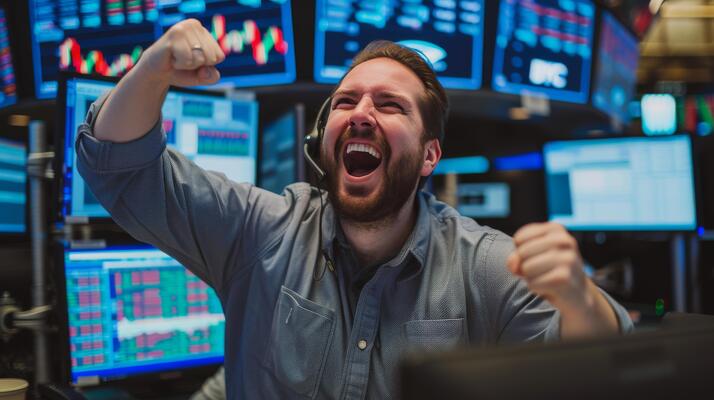
Congratulations if you've been trading on a demo account, having a lot of green days, and hoping to eventually get a funded account with a prop firm. You are already in the lead. However, trading S&P futures in a funded account is more than just completing a task or boasting about a successful week.
It's about demonstrating your ability to handle real pressure, real rules, and real consequences without letting emotions get in the way. And believe me when I say that the S&P futures market will test your last remaining self-control.
The question then becomes: Are you truly prepared?
Let's get started.
Why S&P Futures?
Let's make sure we all understand why S&P futures are important to prop traders before we start the "ready or not" checklist.
The E-mini S&P 500 (ES) and Micro E-mini S&P 500 (MES) are essentially the beating hearts of the US stock market since they track the value of the S&P 500 index. The ES will be unhappy if the big tech sector is having a bad day. The ES gets a cold if the Fed sneezes.
Here's why prop traders adore them:
- Liquidity: A whole lot of volume, tight spreads.
- Volatility: Sufficient movement to provide good trade opportunities daily.
- 24-hour market: Almost round-the-clock action (good for traders in other time zones).
- Technical-friendly: Price action honors levels quite well relative to some wilder markets.
Liquidity and volatility are a double-edged sword. They can make you money fast… and take it away just as quickly.
The Prop Firm Twist
When you're trading your own money, the only rules that apply are the ones you create for yourself. With a funded prop firm account, you're trading somebody else's money. That's with strings attached.
The typical rules for S&P futures in a funded account are:
- Daily loss limit: Blow past this and you're out.
- Max trailing drawdown: Your account can't fall below a certain level.
- Position size limits: No going all cowboy with 20 ES contracts.
- No holding through some news events: Some shops don't want you in a position when the FOMC begins spouting off.
Sounds limiting? It is. But the tradeoff is—you gain access to more buying power without using your own capital.
The Reality Check: Beating a Test vs. Remaining Funded
It's easy to pass a prop firm challenge on S&P futures trading. Being funded for the long term? That's an entirely different ball game.
During the challenge period, you may take riskier positions to achieve profit goals quicker. But when you're funded, that "go big or go home" attitude can destroy you. Your #1 responsibility is now risk management, not making huge profits.
Too many traders learn the hard way:
- In the challenge: They hit their target in 5–7 days.
- In the funded account: They blew up in 2 days because they couldn't shift gears.
If you can't slow down, size down, and think long-term once you're funded, you're not ready.
The Emotional Side of Funded Trading
Trading with "house money" still feels like trading with your money.
Why? Because losing the funded account is losing your chance at regular payouts. There's a psychological burden to having one bad day send you packing.
Some usual emotional pitfalls:
- Fear of losing the account → causes hesitation and missed opportunities.
- Overconfidence after payouts → causes revenge trading and blowing limits.
- Pressure to perform → causes overtrading.
If you can't remain emotionally level during both winning and losing threads, you won't be able to hold your seat at the table.
The Skills You Truly Need
If you're unsure if you're prepared to trade S&P futures on a funded account, here's a checklist of skills.
Technical Skills
- You're able to read market structure (not simply memorize patterns).
- You're familiar with how to discern key support/resistance points prior to the session.
- You comprehend the effect of breaking news on intraday volatility.
Risk Management
- You position size for volatility, not greed.
- You have a daily stop-loss policy and you follow through with it.
- You can leave after reaching your daily goal—without "just one more trade."
Execution Discipline
- You don't pursue trades.
- You understand clearly what disqualifies your setup.
- You can sit on your hands in chop rather than forcing trades.
If you’re shaky in any of these areas, the S&P futures market will find your weakness and magnify it.
What a Funded S&P Futures Day Actually Looks Like
Let’s walk through a realistic day in a funded S&P futures account.
- 6:00 AM (Eastern): Pre-market prep. Checking overnight price action, marking levels, reading the news. No rushing into trades just because the market’s open.
- 9:30 AM – 11:00 AM: First volatility wave in U.S. market. You're looking for clean setups off pre-marked levels. One or two good trades here and your day is made.
- 11:00 AM – 1:30 PM: Market tapers off. This is where most funded traders fail—compulsory trading in the chop. The pros back off, perhaps reduce size.
- 2:00 PM – 4:00 PM: Afternoon volatility increases. Either a continuation move or a reversal. Your task: follow the plan and don't overtrade.
That's it. Observe how there is no "take every move the market gives me" mentality? That's the way you stay alive.
